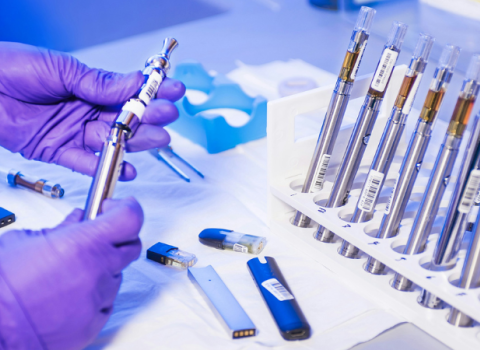
Consumer power meets drug development.
While using consumer feedback to drive innovation may be an easy concept to grasp when it comes to the subjective judgements and fashionable prejudices involved in designing white goods or sports equipment, it is harder to see how this approach could be applied to drugs.
After all, developing new medicines is all about defining disease parameters and coming up with objective endpoints that can be accurately measured and subjected to statistical analysis.
But it is also recognised that today’s patients – for which read consumers – are better informed and more engaged in managing their health and well being than ever before. This has broad implications for how the biotech and pharmaceutical industry develops and commercialises new treatments, believes Procter and Gamble (P&G).
Now the company is applying its expertise as a consumer products giant to get a patient’s perspective on disease and use the insights to drive development programmes with biotech partners.
Andreas Grauer, Global Medical Director of New Technology Development, outlined the company’s thinking at the BioPartnering Europe meeting held in London last month. He suggested a consumer-led approach is relevant in particular to hard-to-assess diseases such as irritable bowel syndrome, overactive bladder or sexual disorders. Such chronic and embarrassing-to-discuss disorders have a huge impact on a sufferer’s lifestyle and it is often difficult to define, and then assess, objective measurements of efficacy.
In its programmes P&G is focusing on gastrointestinal and musculoskeletal disorders and women’s health. “These are diseases around which we can add value because there are consumer-related end points,” said Grauer.
Biotechs ‘leaner and meaner’
Grauer said P&G has decided not to do its own discovery work. “There are lots of biotechs out there that do this in a leaner, meaner way. We want to concentrate on licensing and acquiring products,” he said.
P&G’s pharmaceuticals arm has developed prescription drugs since the 1980s, but the company is, of course, far better known for its brands. Ninety-nine per cent of US households have a P&G product in their cupboards.
“The point is that we understand consumers, and in a methodological way,” said Grauer “We carry out 10,000 market research studies per year, not only to help marketing, but also to help us develop products.” In this approach, innovation follows consumer need, rather than vice versa.
It may be a stretch to appreciate how divining a preference for one flavour of Pringles over another, or a liking for rose rather than vanilla scented air fresheners, can be applied to choices about drugs. Here, as in so many markets, the Internet steps in.
The phenomenon of the informed patient has swept away the old paradigm that the doctor knows best. Armed with the wealth of information the Internet provides, consumers now compare healthcare choices like any other product, said Grauer.
Patients will self-diagnose and evaluate different treatment options in advance of consulting their doctors. In the US physicians prescribe what patients ask for in 30 per cent of cases and 80 per cent of the time are highly likely, or might comply, with a request for a particular drug.
Grauer said that as a result “the landscape has changed.” In the old model patients went straight to the doctor. Now they self-diagnose and often self-treat with over the counter products. If that doesn’t work consulting a doctor will be the next step, but patients will then evaluate subsequent treatment recommendations and monitor and track the course of the disease, self-test, and may change treatments.
“So there are multiple levels at which you can get into the chain,” said Grauer.
At the same time cost containment measures by governments and healthcare insurers are shifting costs onto consumers, or reducing the number of treatments that are reimbursed. “In other words you need to look at healthcare through a different lens,” said Grauer.
One example of how P&G has applied its consumer expertise was in a project to improve patient compliance in its prescription treatment for ulcerative colitis called Asacol. Patients need to take four tablets per day, correctly spaced out, to get the full benefits of taking the drug. “We saw it as our challenge to help with compliance,” said Grauer.
The P&G team spent time with patients and did a patient immersion exercise in which P&G staff took placebo tablets. This experience was used to design an on line compliance programme, and so provide better healthcare and build brand loyalty.
P&G is not alone in believing patients’ preferences and views are relevant to drug development. The US Food and Drug Administration is beginning to look for information on the patient experience of taking a drug – or patient reported outcomes – when companies file for marketing approval of new products.
In June 2006 the agency issued guidance on how to compile questionnaires for assessing patient-reported outcomes to support the claims being made for drugs. The measures may represent traditional outcomes such as symptoms, or broader concepts such as well being.
The subtext is that it may no longer be sufficient to build efficacy claims around objective clinical measurements alone. Biotechs will need to take a more consumer-oriented approach to the entire process of drug development. It appears they may have much to learn from consumer products companies like P&G.





 A unique international forum for public research organisations and companies to connect their external engagement with strategic interests around their R&D system.
A unique international forum for public research organisations and companies to connect their external engagement with strategic interests around their R&D system.